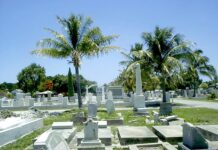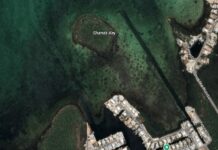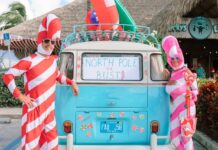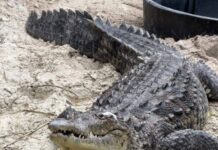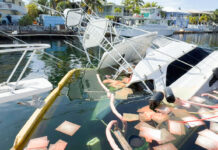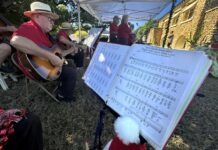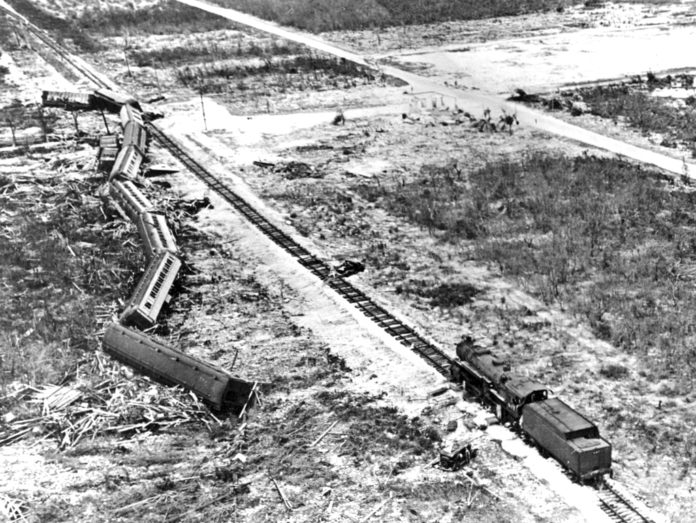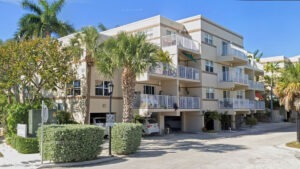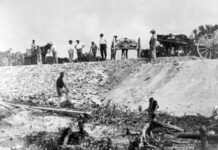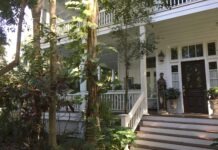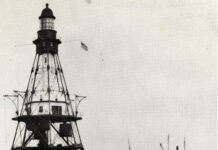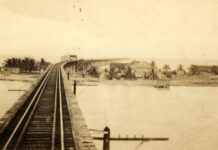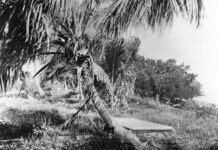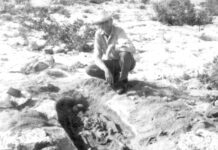Henry Flagler arrived in Key West on Jan. 22, 1912. Thousands attended the heralded event. One of those attendees was a 12-year-old boy named Marvin Thompson. Decades later, he wrote of his memories in an article printed in the Key West Citizen on March 6, 1967, called “The First and Last Trains.”
Thompson described the fanfare associated with that celebrated day: “Many tents had been erected on the man-made desert that was Trumbo for the comfort of the thirsty and hungry throngs. Baked ham and pork sandwiches were consumed as fast as the church ladies could turn them out. Wooden wine barrels filled with Key lime juice mixed with sugar, syrup and cooled with chunks of ice made a limeade that could not be equaled. Guava pie and fresh coconut ice cream also hit the spot. Other raters on the menu were turtle stew, crawfish enchilada and conch chowder, topped off with genuine Key lime pie.”
While 1912 was when Flagler reached the terminus of the Key West Extension of his Florida East Coast Railway, the date did not mark the completion of his Over-Sea Railroad. During Flagler’s trip in 1912, he traveled over temporary wooden trestle bridges when crossing Channel 2 and Channel 5 between Lower Matecumbe and Fiesta keys. The last of the permanent concrete bridges were completed in 1916, marking the official completion of the bridges and tracks connecting Key West to the mainland.
The relatively short-lived life of the train to Key West was never the success Flagler imagined. The beginning of the end came with the opening of the New Orleans-based Seatrain line in 1929. Competition for business between the two lines only intensified with the Great Depression. Because Flagler’s train and the train ferry operating between Key West and Havana were affiliated with the Florida East Coast Railway, the Interstate Commerce Commission assessed additional taxes on goods being shipped. Subsequently, Seatrain was able to offer cheaper shipping rates. As a result, the Florida East Coast shipping traffic substantially dwindled—nearly to nothing.
Already a failing enterprise, the impending Category 5 hurricane that would go on to destroy 40 miles of track and bridges would only be the final nail in the Key West Extension’s already constructed coffin. As for what happened on Monday, Sept. 2, 1935, at 3:30 a.m., the Weather Bureau called the FERA office at the Matecumbe Hotel in Islamorada to relay the message, “Caution high tides and gales on Florida Keys.”
Miami Daily News reporter William Johns called FERA officials at the hotel at 9:30 a.m. and talked to Ray Sheldon. Johns was told that if the weather got too bad, two trains in Miami were available to make the run to Islamorada and could arrive on three or four hours’ notice.
Ernest Carson, of the Miami office at the Weather Bureau, called Sheldon at 10:30 a.m. to inform him that hurricane warnings had been issued in Key West. Sheldon told Carson that they would be evacuating the hundreds of veterans stationed in work camps at Windley Key and Lower Matecumbe. Sheldon called his boss, Fred Ghent, to get approval. On that day, Ghent slept in late and then went out for a late lunch. No one in his office knew where he went, and the two men were unable to connect until 1:45 p.m.
It was not until almost two o’clock that the Florida East Coast Railway was contacted and the rescue train ordered. It took two hours to assemble locomotive number 447, six passenger cars, three baggage cars, and a pair of boxcars. The train rolled out of the rail yard at 4:25 p.m. Miami Daily News reporter William Johns was on board. Almost immediately, the train was halted by a drawbridge to allow boat traffic to pass through. The train sat on the tracks for 10 minutes. It reached Homestead at 5:15 p.m. Telephone wires and repair crews were boarded. Thinking it would be quicker to push the train out of the Keys, the locomotive was turned around in order to pull the cars down the tracks to the Keys in reverse. The train rolled out of Homestead at 5:30 p.m.
It arrived on Windley Key at Veteran Camp 1 at 6:50 p.m. As it began to depart, it became entangled in a cable that had fallen across the tracks. It took 80 minutes to untangle the heavy-gauge cable from the wheels, and the train did not arrive at the Islamorada Depot until 8:10 p.m. Wind blew one of the 75-ton boxcars over. At approximately 8:20 p.m., the hurricane’s tidal surge crashed over the island and toppled the train. Reporter William Johns said, “We had been stopped but 10 or 15 minutes when a wall of water from 15 to 20 feet high picks up our coaches and swirls them about like straws.”
Twenty-three years after Henry Flagler’s dream arrived at Key West, the last train to roll over the Florida Keys experienced what can only be described as a living nightmare. It never steamed over the island chain again.



